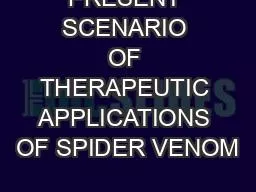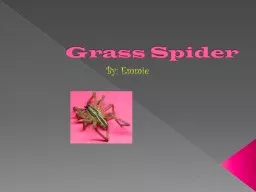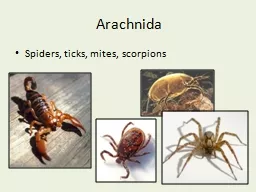PPT-PRESENT SCENARIO OF THERAPEUTIC APPLICATIONS OF SPIDER VENOM
Author : bikersnomercy | Published Date : 2020-06-24
PROTEIN Writuparna Dutta Debpali Sur Presidency University Kolkata Abstract Spiders are predaceous organisms that utilize their venom to overpower their
Presentation Embed Code
Download Presentation
Download Presentation The PPT/PDF document "PRESENT SCENARIO OF THERAPEUTIC APPLICAT..." is the property of its rightful owner. Permission is granted to download and print the materials on this website for personal, non-commercial use only, and to display it on your personal computer provided you do not modify the materials and that you retain all copyright notices contained in the materials. By downloading content from our website, you accept the terms of this agreement.
PRESENT SCENARIO OF THERAPEUTIC APPLICATIONS OF SPIDER VENOM: Transcript
Download Rules Of Document
"PRESENT SCENARIO OF THERAPEUTIC APPLICATIONS OF SPIDER VENOM"The content belongs to its owner. You may download and print it for personal use, without modification, and keep all copyright notices. By downloading, you agree to these terms.
Related Documents














